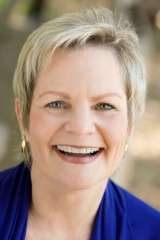Planning for Aging in YOUR Community

Sara Zeff Geber, PhD, is a professional group process facilitator, a transition coach, and a gerontologist with a special focus on aging in community. She spoke on the topic of her article at the May 2016 Aging Better Together Cohousing Conference.
Aging in Community…for many, it’s an idyllic thought. However, much as we would like to think that we will just grow a little older each year, continuing to share meals with our community, putter around the common garden, travel, take long walks with friends, do volunteer work, and attend concerts and local events, growing older often brings with it some challenges. Our mobility might become a greater effort, we may not be able to manage stairs any longer, our eyesight and hearing may fade, or we may not have the sense of balance we once did. Though these eventualities may seem remote at sixty, when we are feeling chipper and energetic, at seventy, eighty or ninety we will likely be looking at a very different picture.
So, how do you prepare your community for a future in which you have all grown older? First, it’s important to understand what happens to bodies as they age. Wrinkling skin, loss or graying of hair, weight gain, dark splotches on skin, a slower pace, and a changing facial structure are visible and obvious. Decreasing lung capacity, diminished ability to absorb oxygen, slower nerve conduction, and loss of bone mass and muscle strength are far less obvious, but they are happening, nonetheless – faster for some than for others. These may all be accompanied by losses in our ability to sense the world around us and react to it.
The simplest way to determine what needs to change to make your community more age-friendly is to evaluate your common areas and individual units through the lens of each of our five senses. To do this, pose the following questions to your community:
1. What hazards exist around our community for a person with diminished eyesight?
2. What community activities do we engage in that would not accommodate a person with poor hearing?
3. What dangers might a person who has lost their sense of taste, smell, or touch encounter in their own unit? In the common house?
4. What hazards exist around our community for a person with poor balance?
A plan for making your community more accessible and safe for aging can be derived from a discussion of the above questions. Turn your list of hazards into a list of improvements to consider. You may not be able to do them all at once, but the sooner you start, the better you will be able to spread out the work and the expense the changes will incur.
Category: Aging in Community
Tags: Accessibility, Aging, Group Process, Senior
Views: 612

